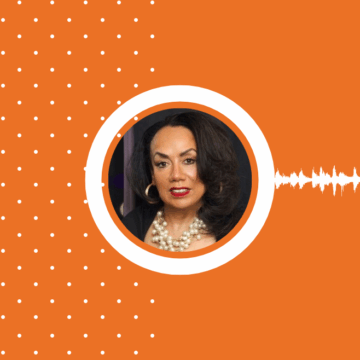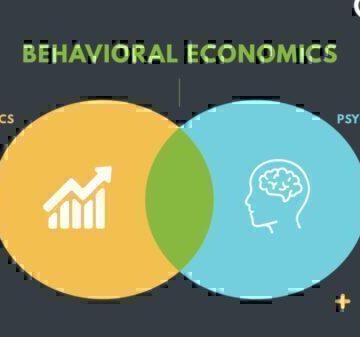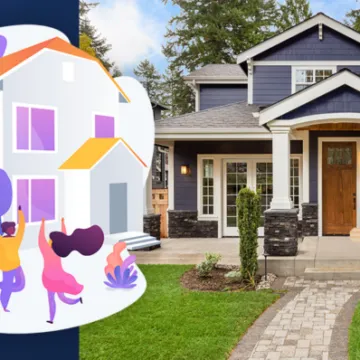Student Loan Payments will Restart in October 2023
After a three-year pause that began in March 2020 amidst the pandemic, the U.S. Department of Education posted an announcement to their website that payments will resume for those with student loan balances.
The pause, which has been extended six times, reached its definitive end with congress recently passing a law that prevents further extensions.
If you’re feeling anxious about the news, you’re certainly in good company—nearly 37 million borrowers will be paying student loan interest beginning September 1, 2023, with payments to follow in October. As protections end, here are some ways to get ahead in your financial planning.
1. Confirm what you owe.
So, how’s your memory after the longest payment freeze of federal student debt in history? As a first step, you’ll need to determine your current balances and who your loan servicers are.
The Federal Student Aid website is the easiest and most efficient way to access this information. You’ll first need to log in with your FSA ID (which you can create here if you don’t have one already.) Once logged in, you can view the original principal amount, current balance, and interest rate.
Keep in mind that current loan amounts are subject to change. As of this writing, the Supreme Court has yet to issue a ruling on Biden’s plan to cancel up to $20,000 in student loan debt.
If you have private loans, this information won’t appear on the Federal Student Aid website. You have a few options here: you can log into your lender’s website or app—if you’re unsure of who your provider is—you can visit AnnualCreditReport.com to access your free, weekly credit report which lists loans in your name. A third option is to contact your school’s financial aid office directly. They can likely help track information, as most private loans are school-certified.
Something to note: some loan providers ended services or transferred contracts during the pandemic so it’s worth double-checking to confirm your information hasn’t changed.
2. Evaluate your repayment plan.
After the lengthy payment pause, it’s a good idea to revisit overall affordability. Based on your current monthly income and expenses, you might find that resuming payments for federal student loans creates pain points when it comes to budgeting.
The Department of Education has a loan simulator which can provide options if you’re concerned about managing the additional expense. Spend some time deciding which payment plan fits your goals (lower payments? Faster payoffs?) and consider switching to an income-driven repayment plan. This takes your earnings into account and may help lower your monthly payment.
Private student loan lenders typically don’t offer income-driven plans, but they might offer alternative repayment plans on a case-by-case basis.
GreenPath Financial Service
Resources for Students and Graduates
If you’re starting college or is now repaying your student loans, take a look at these resources from GreenPath. These resources can help you plan for a financially healthy future.
3. Consider loan consolidation.
While on the subject of loan affordability, you might want to consider consolidating your student loansconsolidating your student loans. This option will depend on your specific financial picture, so be sure to do your research. Here are some pros and cons when it comes to federal loan consolidation:
Pros
- One bill: Having fewer bills to keep track of makes staying on top of payment deadlines more manageable and reduces the chances of missing or late payments which have a direct impact on your credit score.
- Lower monthly payment: A standard loan repayment is ten years but with a Direct Consolidation Loan, you could have a repayment timeline of up to 30 years. This can make your monthly payments more affordable as they’ll be spread over a longer repayment period.
- Access to repayment plans and forgiveness: Not all loans are created equal. FFEL and Perkins Loans don’t qualify for certain income-driven repayment plans or Public Service Loan Forgiveness (PSLF), for example. But if you combine those loans into a Direct Consolidation Loan, you can gain access to those programs.
Cons
- Longer repayment: While having a longer repayment period does translate to a lower monthly payment, the flipside of that equation is that you’ll be in debt longer and it will cost you more interest over time.
- Loss of federal benefits and forgiveness: In deciding to consolidate loans that aren’t Direct Loans, it’s possible that you could lose access to interest rate discounts, principal rebates, income-based repayment plans and forgiveness programs like PLSF.
- Added interest: Unpaid interest on the loans you’re consolidating doesn’t disappear, unfortunately. That interest is added to the principal balance when you consolidate your loans. Interest then accrues on this higher balance.
4. Make a plan.
If you’re feeling anxious and overwhelmed when it comes to preparing your finances around student loan repayment in October, we can help. At GreenPath, we aren’t just financial wellness experts, we’re humans who have experienced firsthandexperienced firsthand the challenge of balancing student loan repayment with everyday living costs.
Our empathetic and certified counselors can help review your budget and develop a personalized plan to mitigate the impact of student loan repayment when October arrives.










